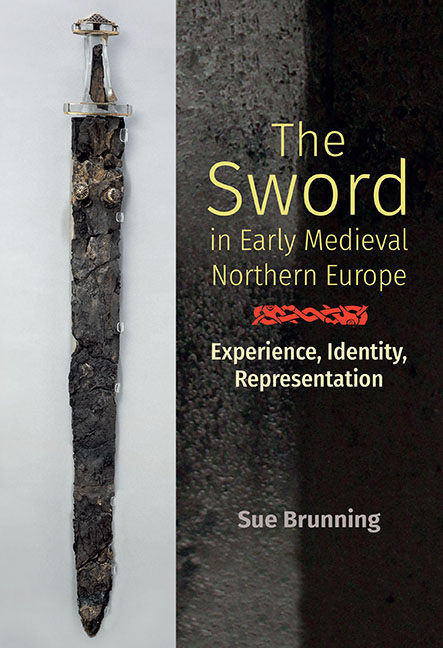Summary
Experience, Identity, Representation
Early medieval art, archaeology and texts communicate in different ways but many of their messages synchronise if compared mindfully within their context and limitations. This book has traced one message across the boundaries traditionally imposed between these sources: in Anglo-Saxon England, swords were the focus of deep and complex feelings, emotions and perceptions. Many they shared with their Scandinavian neighbours, first across the North Sea and then via settlements in Britain itself; others seem to have been culturally distinctive. The prevalence of certain ideas is difficult to reckon where they are confined to an individual source, or cannot be followed confidently from one source to another; but authentic attitudes are likely to exist where different types of evidence appear to sing from the same hymn-sheet.
Perceptions of Swords in the Early Medieval North
Early medieval perceptions of swords were diverse and intricate; but much like the individual strands of an elaborate tapestry, they weave together to form a single overall picture. The entire tapestry presents swords as dynamic, active, ‘living’ artefacts in early medieval minds. This notion divides into swords perceived as ‘person-like’ artefacts with an outer visual character and an inner personality or biography; and as active social beings performing roles in their communities that both encompassed and surpassed the purpose for which they were made.
‘Person-like’ Swords
Art, archaeology and texts all present swords as ‘person-like’ artefacts with external and internal qualities that echo those of human beings. To begin on the outside, an attribute that emerges with particular vibrancy is distinctive visual identity: swords had physical features that enabled onlookers to recognise them by sight, much as one recognises a human face by its unique features. Poetry and archaeological survivals agree that hilts were key to a weapon's individuality. Hence, in Beowulf the warrior provoked to violence by the sight of his father's sword, as well as the lingering report of the hilt from Grendel's mere, chime not only with genuine swords distinguished by the configuration and decoration of their hilts, but also with the likelihood, conveyed by asymmetrical wear and ornament, that owners wore their swords with the showier face outwards where viewers might recognise it.
- Type
- Chapter
- Information
- The Sword in Early Medieval Northern EuropeExperience, Identity, Representation, pp. 139 - 156Publisher: Boydell & BrewerPrint publication year: 2019



